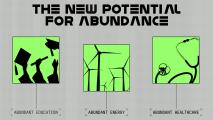A surprising amount of energy goes down the drain every day.
The next time you shower, take note — you see an average of 17 gallons rinsing down the drain. Between toilets, showers, handwashing, dishwashing, face washing, laundry, we’re flushing a continuous stream of water into the sewer lines each day.
The U.S. Department of Energy estimated in 2005 that Americans wasted the equivalent of 350 billion kilowatt-hours (kWh) of energy each year from unused hot water — about 3,000 kWh per household. To put things in perspective, the average American household consumes roughly 11,000 kWh of electricity every year.
The city of Denver plans to tap into those underground heat reserves by constructing North America’s largest sewage heat recovery facility — increasing our renewable energy options to fight climate change.
“Sewer heat,” say what? When we think of clean energy, we usually think of wind generators grinding in the breeze or solar panels soaking up sunlight. But energy is all around us — much of it squandered because we don’t know how to capture it.
The concept, called “sewer heat recovery,” is gaining traction as a green power solution.
By gathering excess warm water flowing through the sewer lines from showers, dishwashers, etc., and storing it in a temperature-controlled pit, the stored heat can serve as a year-round energy source. Then, a heat pump (which works like a reverse air conditioner) can tap into the heat from the wastewater to create usable energy again.
“With the advent of large-scale heat pumps, we can cost-effectively use, say, 70-degree wastewater to heat our buildings and our hot-water systems,” Shanti Pless, an engineer with the National Renewable Energy Laboratory, told NPR.
The project: Although heat recovery systems have been around for quite some time, Denver plans to take it to the next level by building the largest sewer heat recovery project in North America.
Over the next few years, a $1 billion remodeling project will turn the National Western Center into an art and agriculture site, heated and cooled by the sewer water buried in the sewer lines below. Heat exchangers will transport wastewater heat to different parts of the campus via an ambient loop, with a central plant pumping water out to the buildings, reports Energy News-Record.
“We’re making long-term decisions for this campus about how we are going to heat and cool these buildings, and there’s a lot of ways that you can do that,” Brad Buchanan, the CEO leading the redevelopment, told The Denver Post. “While it may not seem very romantic to look at sanitary sewer lines, in fact, there is tremendous thermal energy in them.”
The benefits of wastewater: The Center could save big when it comes to environmental impact. Even if wastewater is clean after getting processed by a water treatment plant, the warm water can impact river and lake ecosystems when it exits the sewer lines.
But with sewer heat recovery, not only can the warm water be converted back into usable energy, it also doesn’t disrupt the temperature of nearby bodies of water.
Despite its dirty connotations, sewage water is actually a clean energy source; unlike coal or other forms of power, it doesn’t release carbon dioxide into the atmosphere. The National Western Center estimates that the initiative will save tons of carbon, reports NPR.
“It’ll be interesting to see if folks start to look at not just where light rail lines or good schools are located, but what’s the proximity to a large sanitary sewer line,” Buchanan told NPR. Proximity to a large sewer might not have been appealing before, but Buchanan thinks that could change and become appealing for the energy cost savings.
We’d love to hear from you! If you have a comment about this article or if you have a tip for a future Freethink story, please email us at [email protected].






